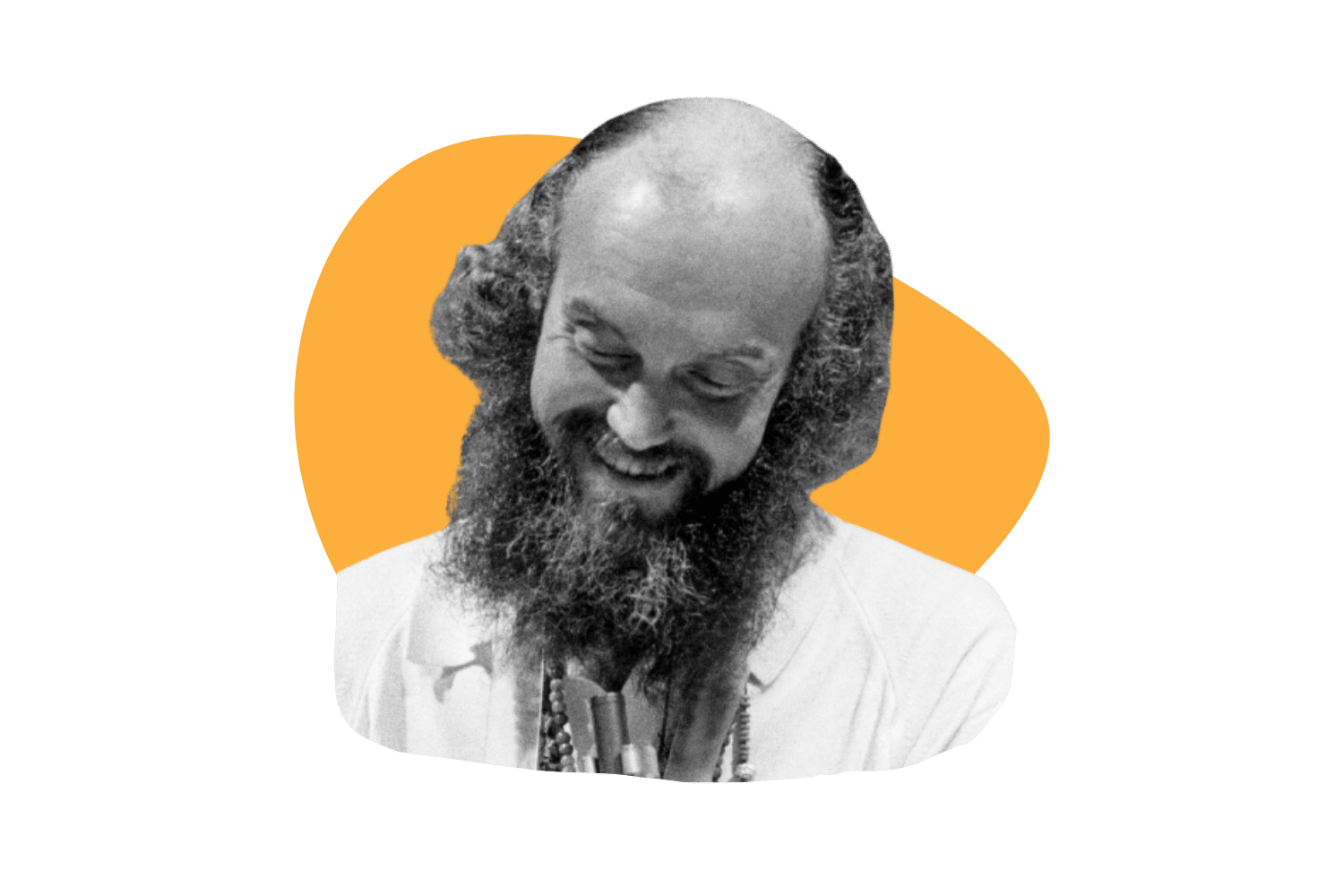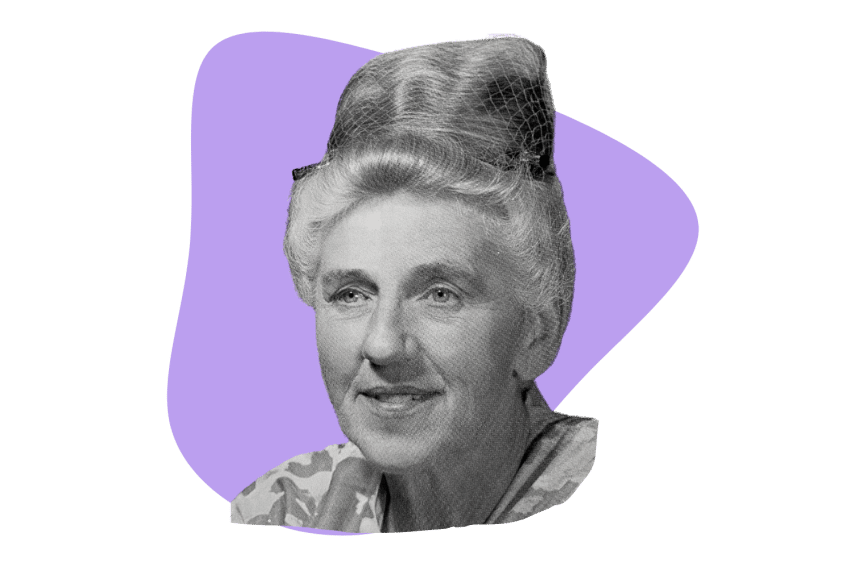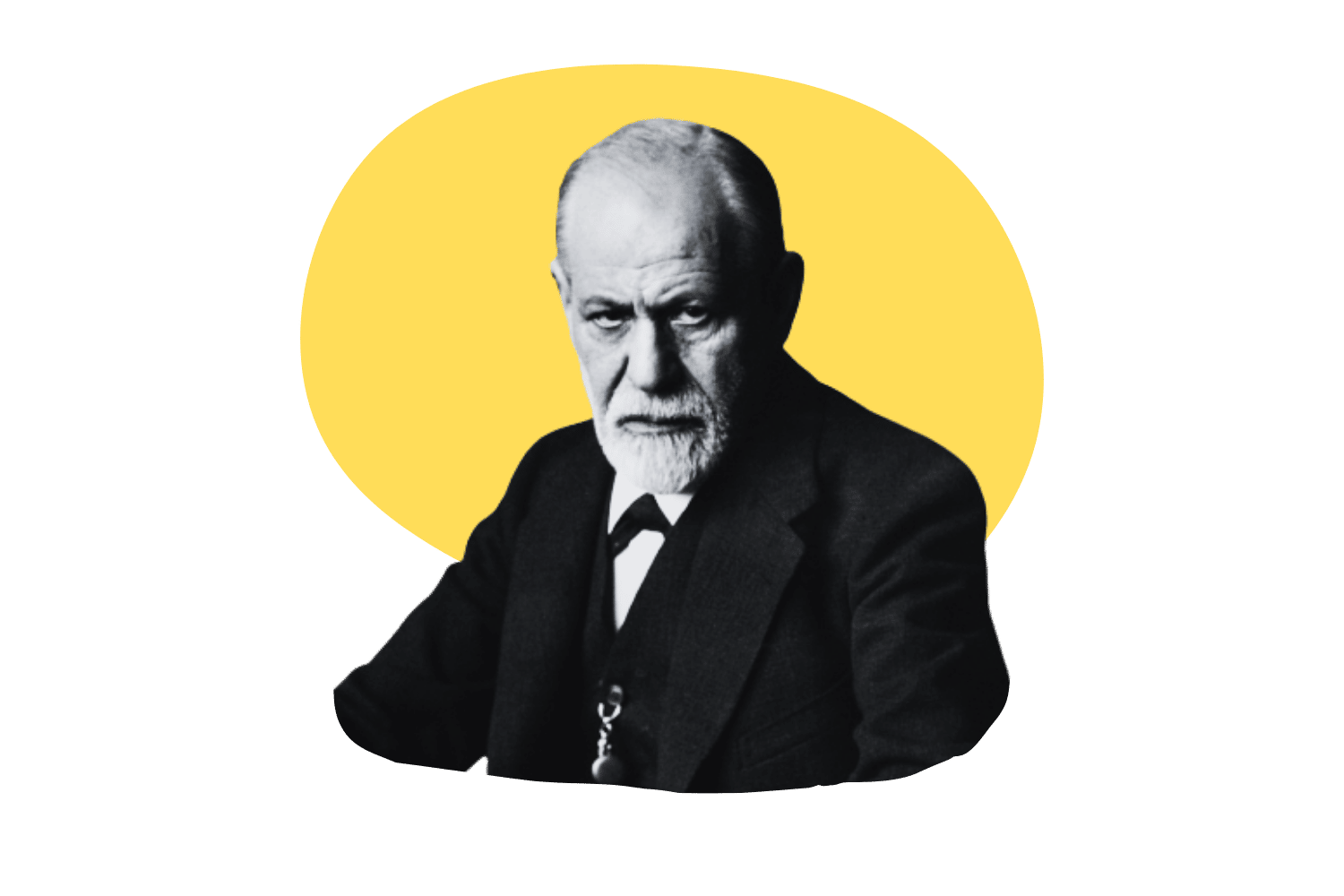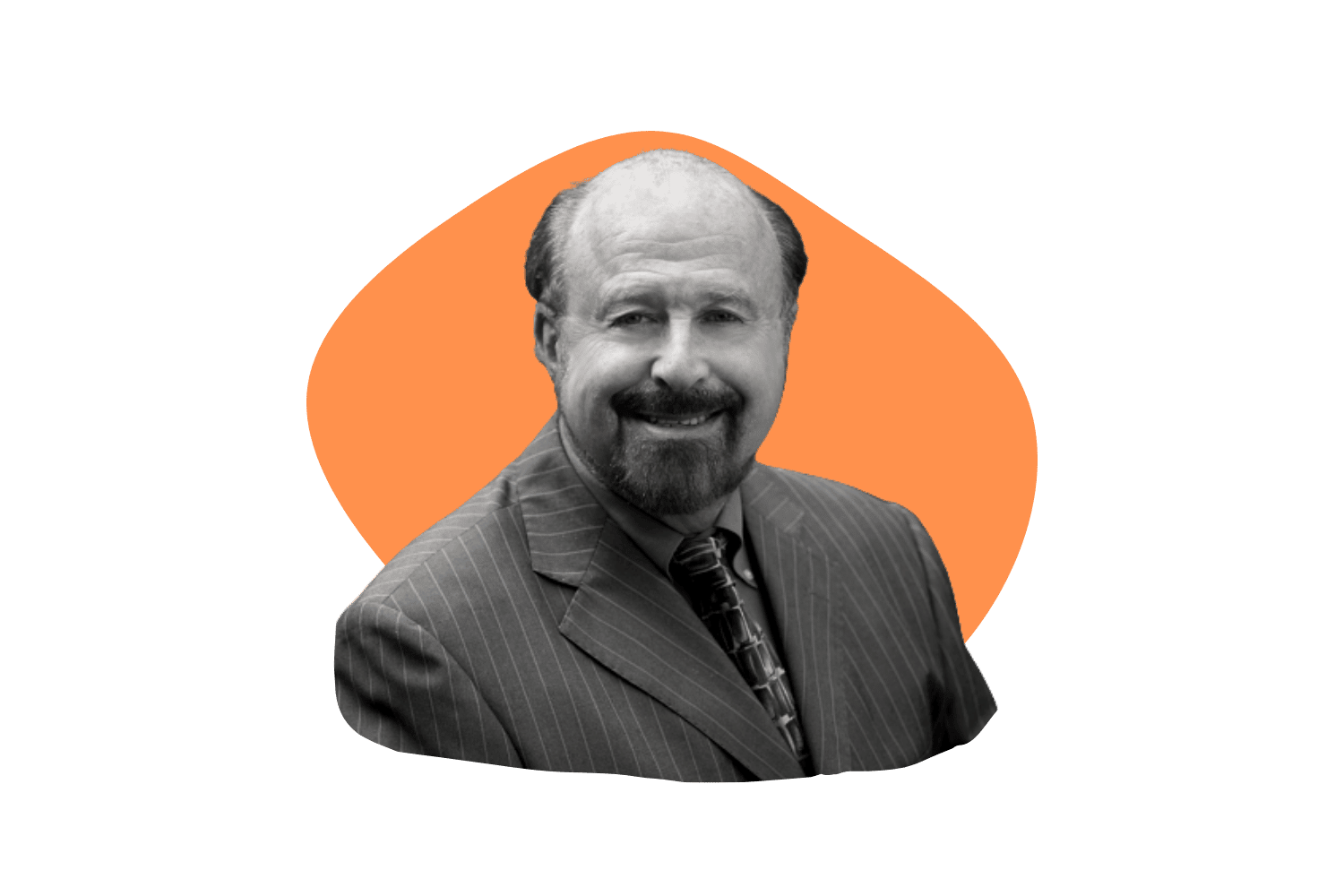Paul Stamets: The Mycologist Who’s Changing the World
Can shrooms save the planet and mankind? It doesn’t hurt to try…
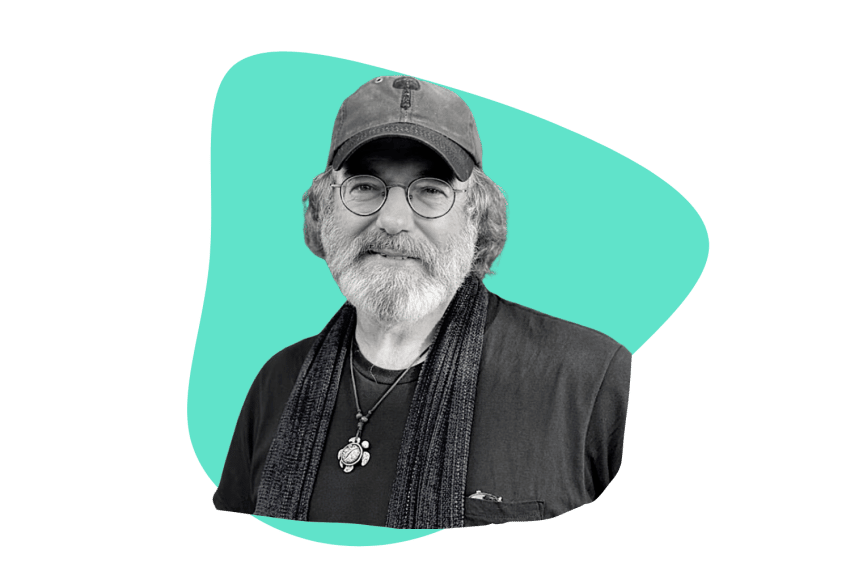
Paul Edward Stamets is a famous American mycologist and an industry leader in the world of mushrooms.
He’s a researcher, speaker, author, farmer, filmmaker, and entrepreneur who’s concerned with all things fungi. He has and continues to educate the world about the power of mushrooms and their potential to save the planet.
Paul Stamets gives a voice to the mycelium that lives silently beneath our feet.
In this article, I’ll delve into the fascinating mind of Paul Stamets by:
- Looking at who Paul Stamets is
- How he was introduced to the world of mushrooms
- Looking at his Career Achievements with Fungi Perfecti
- Checking out his Journey as a mycologist
- Assessing his work with psilocybin
- Finding out what he’s doing now
We’ll also be looking at how this man strives to take on the greatest challenge of them all — saving the planet — as well as the books, films, and research papers he has contributed to.
Who Is Paul Stamets?
Paul Stamets was born in Ohio in 1955. He is an American mycologist — someone concerned with the study of fungi. He’s an advocate for the use of mushrooms for medical, health, and environmental purposes.
Stamets is an industry leader in the field of mycology. His entrepreneurial skills have allowed him to grow several branches of his business in order to spread both his knowledge of fungi and the medicinal powers of mushrooms. He has written more than six books and owns Fungi Perfecti — a company that sells cultivation equipment, medicinal mushroom cultures, and mushroom-based supplements.
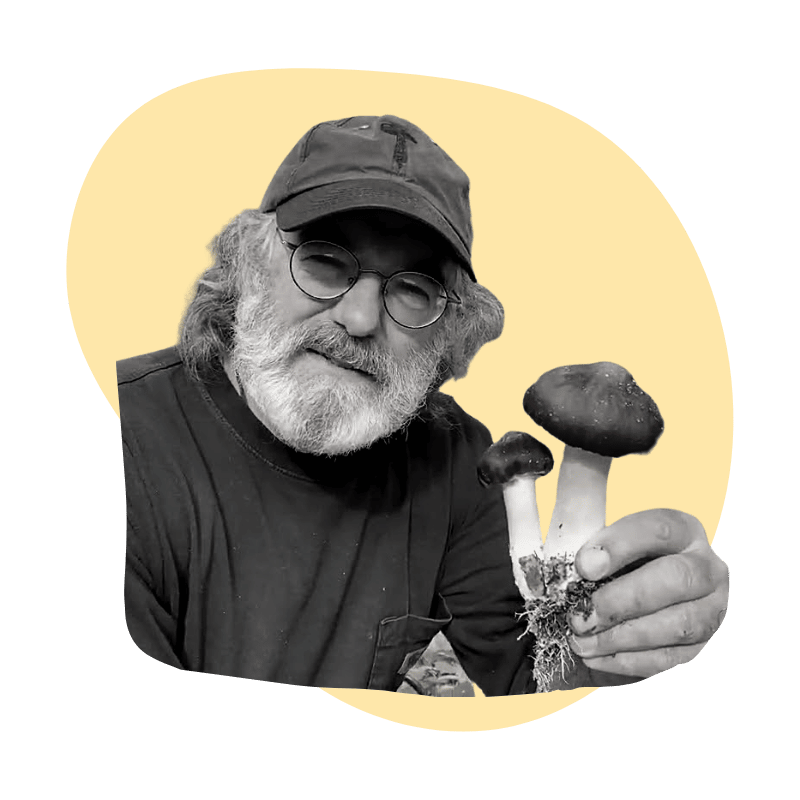
Paul has been featured in a variety of documentaries, hosted TED Talks, interviewed by various media outlets, and has a YouTube channel where he shares his knowledge and experiences in mycology.
He has received numerous awards for his efforts in the mycological space, including the National Mycologist Award from the North American Mycological Association, the Invention Ambassador Award from the American Association for the Advancement of Science, and the Gordan and Tina Wasson Award from the Mycological Society of America.
Paul Stamets has been featured in a variety of different film and television series about mushrooms, psychedelics, and environmental issues. His most recent depiction was in Fantastic Fungi — a documentary detailing the world of fungi and how mushrooms can heal, sustain, and regenerate life on Earth.
What Is Paul Stamets Most Famous For?
Paul Stamets is famous for much of his work in the field of mycology. He’s known for his research and advocacy of the use of mushrooms for medicinal purposes and as a means of restoring the damage humans have inflicted on planet Earth.
He’s well-known for his work in bioremediation, which involves using mushrooms to clean up toxins, contaminants, and pollutants in the soil. Perhaps his most famous work regarding the environmental potential of fungi is his book titled “Mycelium Running: How Mushrooms Can Help Save the World.”
Stamets is also popular among the psychedelic community for his extensive research into psilocybin-containing mushrooms. He’s an advocate for “magic mushrooms,” such as Psilocybe cubensis, in medicinal and therapeutic applications.
Paul Stamets’ Early Life
Paul Edward Stamets was born in Salem, Ohio, on July 17, 1955. He grew up in Columbiana with his older brother John, his twin brother North, and his two younger siblings, Lilly and Bill.
Paul’s early life and journey to become a mycologist are fascinating. He went from a shy young man with a stammer and lack of confidence to an industry-leading mycologist with the confidence to speak his mind to the world.
Paul’s Fascinating Introduction to Mushrooms
Paul struggled with a speech impediment in his early life. He used to stutter when communicating with others, which caused him to become shy, embarrassed, and reclusive.
With this lack of confidence, Paul found himself hunching over and looking at the ground most of the time — something that led to him noticing the many mushrooms that grow underfoot.
He has thanked his childhood stammer for showing him the world of fungi — a world that often goes unnoticed by others.
When he was 18 years old, Paul tried psychedelic mushrooms for the first time. While tripping, he climbed up a tree in the forest shortly before a powerful thunderstorm swept through the land. Unable to get down from the tree, he sat out the remainder of his experience in the canopy, realizing that he could die any minute.
Although frightening, Paul recalls that the experience was unbelievably beautiful. He felt he was truly connected with the forest, nature, and the universe.
He reports that the trip was incredibly inward and provided him with a reflection on his life. While “peering inside his soul,” Paul told himself over and over again that he must stop stuttering.
Once he came down from the mushrooms and could climb out of the tree, he hurried home. As he walked into his neighborhood, Stamets went to make conversation with one of his neighbors — an attractive young woman whom he usually struggled to speak to.
To his and the neighbor’s surprise, Paul spoke to her with clear and uninterrupted English. After this experience, his stutter never returned. Fascinated by this rapid transformation, Paul decided to devote his life to the study of fungi and the potential medical benefits of mushrooms.
From Forestry to Fungi
In his early working life, while studying at college, Paul set chokers (short pieces of cable used for hauling logs) in the forest for a logging company. He worked without pay for 21 days because the company wouldn’t hire him because “he was a long-haired hippy.” Regardless, Paul showed up every day at 4:30 in the morning with his hard hat and the motivation to work.
Even though the forestry workers told him he’d never get a job with the company because of how he looked, Paul continued to show up every morning. He said to himself, “Eventually one of these yahoos is going to get drunk and not show up for work.”
Sure enough, one of the workers from “the skyline operation” — a dangerous form of logging involving timber extraction with a cableway — failed to show up for work numerous times. The skyline operations crew insisted on hiring Stamets because of his consistent punctuality.
Paul did this for three years as a summer job while studying at the Evergreen State College in Biology and Electron Microscopy. His time in the forest grew his interest in mushrooms further, and after leaving with a bachelor’s degree from Evergreen State in 1979, he was fast to make his stamp in the field of mycology.
Stamets Starts Fungi Perfecti
After his time in college and the forest, Paul created a business around his passions and what he believed in. Paul Stamets started Fungi Perfecti in 1980 with the goal of building a bridge between fungi and people. He wanted to promote the cultivation and use of gourmet and medicinal mushrooms for their health benefits.
Stamets also started the company as an avenue of research. He utilized funds and resources from the Fungi Perfecti to support research into areas such as bioremediation (the process of detoxifying and degrading soil contaminants) and pest control. Since its establishment, Fungi Perfecti has become a hub for various resources, products, and technologies.

A branch of Fungi Perfecti that has done particularly well is Host Defense.
Host Defense is a range of supplements created by Paul Stamets and his team at Fungi Perfecti. These are organic, non-GMO, vegan, and gluten-free. They’re made from a variety of different medicinal mushrooms and support immune responses, help alleviate stress, and promote respiratory, digestive, and circulatory responses.
The Host Defense range of supplements hosts a variety of mushroom blends, which help alleviate symptoms of many health issues and support altered bodily responses.
Fungi Perfecti now conducts research and sells its Host Defense supplements, mushroom grow kits, gourmet goods, clothing, cultivation equipment, and information in the form of Stamets’ books.
The ongoing mission of Fungi Perfecti is to “explore, study, preserve, and spread knowledge about the use of fungi for helping people and the planet.”
Paul Stamets’ Journey as a Mycologist: From Foraging to Farming
“I started with virtually no money. I just followed my heart and my passion.” — Paul Stamets.
Paul’s journey as a mycologist wasn’t easy. His parents, although supportive, advised him against pursuing his passion for mushrooms, telling him that he would never make any money out of the field. He had to battle many hurdles, and the path to success wasn’t straight, but regardless, he is hugely successful in doing what he loves.
Stamets has said that in his early life, he saw every challenge he faced as an opportunity to grow, a lesson, and something that would ultimately make him stronger and wiser. This determination and ethic led him to become an industry leader in mycology.
Paul was forced down a path of many twists and turns, but it led to the place he is today. Along the way, he lectured, worked in laboratories studying and growing psilocybin and gourmet mushrooms, taught students how to cultivate, and raised awareness of the climate crisis and how it can be handled with the use of fungi.
What started as nothing short of a miracle when he cured his stammer with psilocybin mushrooms turned into him foraging in the forest during his work as a forester. This eventually led to him starting Fungi Perfecti and farming medicinal and gourmet mushrooms on an industrial scale.
Paul Stamets’ Work on Psychedelics: “Microdose Me”
Although Paul Stamets is most famous for his efforts in developing mushroom technologies to help the environment (more on this soon), he has undertaken several studies on psychedelic fungi and how they can benefit mental health.
His greatest contribution to the psychedelic space is his research on microdosing and its effectiveness in treating a range of different conditions.
Paul helped produce an application called microdose.me alongside the Quantified Citizen in Vancouver. This is a free app for Apple and Android phones that serves as a vessel for a huge meta-study. The app has over 14,000 people subscribed to it, with over 4000 microdosers and 4500 non-microdosers (for comparison).
The app was designed specifically to measure the effects of microdosing. It has three different levels for anonymous microdosers to select from — less than 0.1 grams, 0.1–0.3 grams, and 0.4 grams or higher.
It allows people to select their chosen microdose and their reasons for medicating in this way. The app measures mood, depression, and anxiety. It has a range of activities that allow people to test their memory, hearing, and eyesight. This data is used to assess the potential effectiveness of low-dose psychedelics.
Although this is an ongoing study, some data has already been analyzed. They assessed the P-Values of significance — essentially, the strength of the data. Simply put, the P-Values of significance were more than four zeros, meaning the confidence of the resulting data is strong (around 99.9999 percent).
The results so far show that psychedelic microdosers using LSD (lysergic acid diethylamide) or psilocybin have seen a significant increase in mood and a reduction in depression and anxiety [1]. However, this study is ongoing, and data is being collected daily.
This is the largest meta-study looking into psychedelic microdosing, and the data collected from it will likely pave the way for future trials into the effectiveness of low-dose psychedelics for mental health.
If you want to participate in the study, whether a microdoser or non-microdoser, you can download the app at microdose.me.
Stamets’ Contributions to the Environment
Paul Stamets advocates the use of mushrooms for physical and mental health in humans. However, perhaps his most intriguing and powerful contribution to the field of mycology is to the environment.
Paul Stamets believes and has proven that mushrooms can play a part in the restoration of Mother Earth.
We as a species have caused mass devastation on our planet and, as Paul puts it:
We are now fully engaged in the sixth Major Extinction (“6 X”) on planet Earth. Our biosphere is quickly changing, eroding the life support systems that have allowed humans to ascend. Unless we put into action policies and technologies that can cause a course correction in the very near future, species diversity will continue to plummet, with humans not only being the primary cause but one of the victims.”
Stamets believes that “fungi, particularly mushrooms, offer some powerful, practical solutions, which can be put into practice now.”
His research into how mushrooms can help save the world is truly groundbreaking. Over the course of his career, Paul has proven that fungi-based technologies can help solve several world problems, such as cleaning up pollutants, controlling insect pests in agriculture, restoring damaged habitats, and battling chronic health issues in people.
The potentially planet-saving mushroom technologies Paul has developed are:
- Mycoremediation — using fungal-based remediation to clean up toxins and pollutants
- Mycopesticides — controlling pests using fungal-based pesticides
- Mycorestoration — using mushrooms to restore degraded environments
- Mycomedicinals — using fungi to battle human health issues
Paul Stamets is passionate about mushrooms, mycelium, and how fungi can restore the damage that we as a species have contributed to. He contributes to the environment by developing new technologies that can help restore soil quality, clears up pollutants, and utilize mushrooms for less impactful agriculture practices.

He helps spread the knowledge of these technologies and the power that mushrooms and mycelium have in remedying our environmental crisis.
Stamets’ book “Mycelium Running: How Mushrooms Can Help Save the World” describes the potential applications fungi have in restoring our planet on an ecological level. His TED Talk from 2008, titled “6 Ways Mushrooms Can Save the World,” has further helped spread the message.
He has spread the message further by taking multiple interviews with influential figures such as Joe Rogan. He’s also created and contributed to several documentary films about the climate crisis, the power of mycelium, and the potential remedial qualities that mushrooms bring to the table.
What Is Paul Stamets Doing Now?
Paul Stamets continues to run Fungi Perfecti. He’s still writing, speaking, and being featured in documentaries; he is passionate about spreading knowledge on how mushrooms can heal both people and the planet.
Every year, Stamets adds more value to the mycology, environmental, and psychedelic fields, whether involving a new study, documentary, health product, or environmental technology.
You can keep up with Paul Stamets’ current work by visiting his many networks:
Paul Stamets Quotes
I wonder what would happen if there were a United Organization of Organisms (UOO, pronounced “uh-oh”), where each species gets one vote. Would we be voted off the planet? The answer is pretty clear.”
I believe that mycelium is the neurological network of nature. Interlacing mosaics of mycelium infuse habitats with information-sharing membranes. These membranes are aware, react to change, and collectively have the long-term health of the host environment in mind. The mycelium stays in constant molecular communication with its environment, devising diverse enzymatic and chemical responses to complex challenges.”
In Oregon, a far larger honey mushroom (Armillaria ostoyae) mycelial mat found on a mountaintop covers more than 2,400 acres and is possibly more than 2,200 years old.”
I see the mycelium as the Earth’s natural Internet, a consciousness with which we might be able to communicate. Through cross-species interfacing, we may one day exchange information with these sentient cellular networks. Because these externalized neurological nets sense any impression upon them, from footsteps to falling tree branches, they could relay enormous amounts of data regarding the movements of all organisms through the landscape.”
One of the Big Ideas in this book is that fungi, especially fungi from old-growth forests, may be sources of new medicines that are active against a range of germs, including HIV/AIDS and the causative agents of smallpox and anthrax, potential bioterrorist threats.”
NASA considered the possibility of using fungi for interplanetary colonization. Now that we have landed rovers on Mars, NASA takes seriously the unknown consequences that our microbes will have on seeding other planets. Spores have no borders.”
Fungi marched onto land more than a billion years ago. Many fungi partnered with plants, which largely lacked these digestive juices. Mycologists believe that this alliance allowed plants to inhabit land around 700 million years ago. Many millions of years later, one evolutionary branch of fungi led to the development of animals.”
What a beautiful inspirational model for how human beings might live: In a shared economy based not on greed but on nurturing relationships and mutual cooperation.”
In the wake of catastrophes, fungal diversity helps restore devastated habitats. Evolutionary trends generally lead to increased biodiversity. However, due to human activities we are losing many species before we can even identify them. In effect, as we lose species, we are experiencing devolution–turning back the clock on biodiversity, which is a slippery slope toward massive ecological collapse. The interconnectedness of life is an obvious truth that we ignore at our peril.”
Through the genius of evolution, the Earth has selected fungal networks as a governing force managing ecosystems.”
Toxic fungicides like methyl bromide, once touted, not only harm targeted species but also non-targeted organisms and their food chains and threaten the ozone layer.”
Intact forest ecosystems, by comparison, provide more ecological services than just board feet of lumber. They clean the water, provide shade, and give communities plants, insects, and animals. Protecting our forests is essential not only for our survival now, but also for the survival of generations to come.”
If you were a tiny organism in a forest’s soil, you would be enmeshed in a carnival of activity, with mycelium constantly moving through subterranean landscapes like cellular waves, through dancing bacteria and swimming protozoa with nematodes racing like whales through a microcosmic sea of life.”
People want to give up the responsibility of being able to understand and because they can’t understand then they have faith, and they put their faith in other people who say they can understand.”
NASA reports that microbiologists at the University of Tennessee, led by Gary Sayler, have developed a rugged biological computer chip housing bacteria that glow upon sensing pollutants, from heavy metals to PCBs (Miller 2004). Such innovations hint at new microbiotechnologies on the near horizon. Working together, fungal networks and environmentally responsive bacteria could provide us with data about pH, detect nutrients and toxic waste, and even measure biological populations.”
Books By Paul Stamets
Paul Stamets has written a total of six titles in the fields of mycology, environmentalism, mushroom cultivation, and psychedelic organisms. His most famous book is, without a doubt, “Mycelium Running: How Mushrooms Can Help the World,” but his cultivation guides are also popular. Stamets has co-authored several titles in the same fields as well.
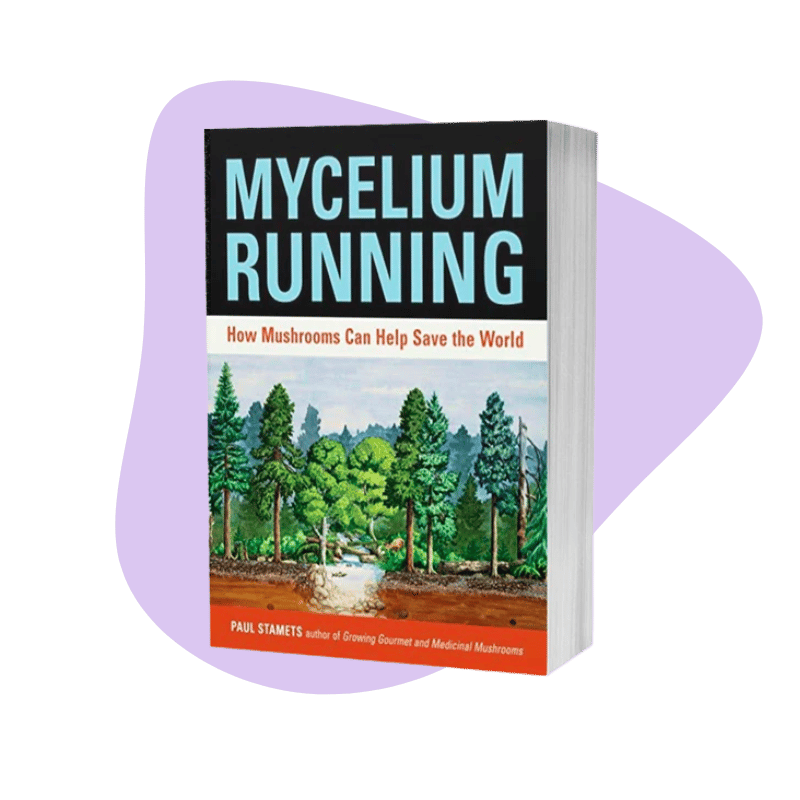
Here are the titles that Paul Stamets has written, co-authored, or contributed to:
- Mycelium Running: How Mushrooms Can Help Save the World — Published 2005
- Growing Gourmet and Medicinal Mushrooms — Published 2000
- Mycomedicinals: An Informational Booklet on Medicinal Mushrooms — Published 1998
- Psilocybin Mushrooms of the World: An Identification Guide — Published 1996
- From Bears and Trees to Mushrooms and Bees: The Story of a Boy who Saves the Honey Bee — Published 2017
- The Mushroom Cultivator: A Practical Guide to Growing Mushrooms at Home — Published 1983
- Fantastic Fungi: How Mushrooms Can Heal, Shift Consciousness, and Save the Planet — Published 2019
- Truths Among Us: Conversations on Building a New Culture — Published 2011
- Max and the Spirit Bear: The Last Place on Earth — Published 2019
Documentary Films Featuring Paul Stamets
Paul Stamets was featured in a variety of different documentary films about fungi, mycology, the environment, and psychedelic-assisted therapy. He was also in the 2007 Leonardo Dicaprio film “The 11th Hour” from Warner Brothers — a documentary film about the state of humanity and the world.
His most recent feature was in the popular Netflix documentary “Fantastic Fungi” — a consciousness-shifting film that dives deep into the world of mushrooms and how they can heal, sustain, and save life on Earth.
In the Star Trek Discovery series, Paul Stamets even inspired the character “Lt. Paul Stamets.” This character — portrayed by actor Anthony Rapp — is an Astromycologist who shares the same name as the “real mycologist.” Paul Stamets’ work with mycelium is a central theme of the series.
Here are the documentary film titles Paul Stamets has featured in:
- Fantastic Fungi: The Mushroom Movie — 2019
- Dosed — 2019
- Dosed 2: The Trip of a Lifetime — 2022
- Dirt! The Movie — 2009
- The Need to Grow — 2018
- The 11th Hour — 2007
- 2012: Time for Change — 2010
- Burning Man 2.0 — 2013
- Dance with Destiny — 2010
- Focus Forward: Mushroom Man — 2012
Paul Stamets’ Research Papers
- Rootman, J. M., Kryskow, P., Harvey, K., Stamets, P., Santos-Brault, E., Kuypers, K. P., … & Walsh, Z. (2021). Adults who microdose psychedelics report health related motivations and lower levels of anxiety and depression compared to non-microdosers. Scientific reports, 11(1), 1-11.
- Alschuler, L., Weil, A., Horwitz, R., Stamets, P., Chiasson, A. M., Crocker, R., & Maizes, V. (2020). Integrative considerations during the COVID-19 pandemic. Explore (New York, NY), 16(6), 354.
- Benson, K. F., Stamets, P., Davis, R., Nally, R., Taylor, A., Slater, S., & Jensen, G. S. (2019). The mycelium of the Trametes versicolor (Turkey tail) mushroom and its fermented substrate each show potent and complementary immune activating properties in vitro. BMC complementary and alternative medicine, 19(1), 1-14.
- Davis, R., Taylor, A., Nally, R., Benson, K. F., Stamets, P., & Jensen, G. S. (2020). Differential immune activating, anti-inflammatory, and regenerative properties of the aqueous, ethanol, and solid fractions of a medicinal mushroom blend. Journal of inflammation research, 13, 117.
- Stamets, P. E., Naeger, N. L., Evans, J. D., Han, J. O., Hopkins, B. K., Lopez, D., … & Sheppard, W. S. (2018). Extracts of polypore mushroom mycelia reduce viruses in honey bees. Scientific reports, 8(1), 1-6.
- Stamets, P., & Zwickey, H. (2014). Medicinal mushrooms: ancient remedies meet modern science. Integrative Medicine: A Clinician’s Journal, 13(1), 46.
- Taylor, A., Flatt, A., Beutel, M., Wolff, M., Brownson, K., & Stamets, P. (2015). Removal of Escherichia coli from synthetic stormwater using mycofiltration. Ecological engineering, 78, 79-86.
- Hwang, C. H., Jaki, B. U., Klein, L. L., Lankin, D. C., McAlpine, J., Napolitano, J. G., … & Pauli, G. F. (2012). Biological and chemical evaluation of anti-TB coumarins from the polypore mushroom, Fomitopsis officinalis. Planta Medica, 78(11), PI470.
- Abrams, D. I., Couey, P., Shade, S. B., Kelly, M. E., Kamanu-Elias, N., & Stamets, P. (2011). Antihyperlipidemic effects of Pleurotus ostreatus (oyster mushrooms) in HIV-infected individuals taking antiretroviral therapy. BMC complementary and alternative medicine, 11(1), 1-8.
- Stamets, P. E. (2005). Medicinal polypores of the forests of North America: screening for novel antiviral activity. International Journal of Medicinal Mushrooms, 7(3).
- Stamets, P. E. (2005). Antipox Properties of Fomitopsis officinalis (Vill.: Fr.) Bond. Et Singer (Agarikon) from the Pacific Northwest of North America. International Journal of Medicinal Mushrooms, 7(3).
- Stamets, P. E., & Plotnikoff, G. A. (2005). Anticancer Medicinal Mushrooms Can Provide Significant Vitamin D 2 (Ergocalciferol). International Journal of Medicinal Mushrooms, 7(3).

